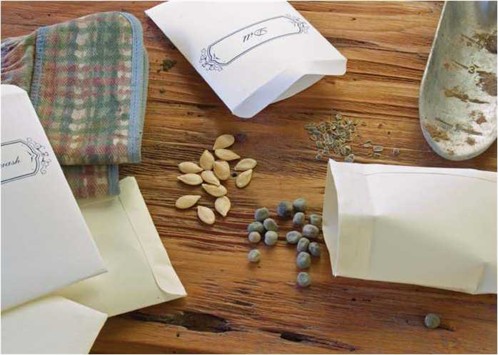Seed Storage
General Design and Application Considerations

Maintenance of seed quality in storage from the time of production until the seed is planted is imperative to assure its planting value. Vegetable and flower seeds may be kept for one year without appreciable decrease in germination. However, storage may be extended to 10 or more years under proper conditions. Seed moisture and storage temperature are the most important factors in determining how long seed can be stored. The drier the seeds are, the longer they will store.
High moisture content, or high relative humidity, and/or temperature during the storage phase of the seeds are major factors that result in the premature deterioration of the seeds. Another concern within the seed storage facilities is fungi. Storage fungi have the capacity to grow at very low seed moisture content. Most storage fungi belong to Aspergillus and Penicillium genera. They cause seed deterioration by producing toxic substances that destroy the cells of seeds which creates dead tissue to sustain the saprophytic fungi. The best prevention to these problems is to store seeds with low moisture content and to maintain low relative humidity levels for the duration of the storage period.
Environmental Standards or Requirements

Conditions essential to good seed storage are just the opposite of those required for good germination. Good germination occurs when water and oxygen are present at a favorable temperature. Good seed storage results when seeds are kept dry (below 8 percent moisture) and the temperature is kept low (below 40 degrees F).
Relative humidity (RH) influences the moisture content of the seed if it is not stored in moisture-proof containers. For example, at 15%RH, seeds will dry down to 6 percent moisture and will store safely in this condition for several years. However, at 90%RH, seed will dry down to only 19 percent moisture and germination will be poor after one year. Seeds are hygroscopic, which means they pick up moisture from the air and release moisture to the air. The seeds adjust their moisture by trying to reach equilibrium with the relative humidity of the surrounding air. This moisture change is not instantaneous and may take several days or weeks depending on the magnitude of the moisture gradient between the seed and the air.
Temperature influences how much moisture air can hold. It has been suggested that the sum of the percentage of relative humidity plus the temperature in degrees Fahrenheit should not exceed 100 for safe storage (examples: 50%RH and 50°F temperature; or 40%RH and 60°F; or 60%RH and 40°F). This rule, referred to as the "100 Rule," can be a useful reference, but should not be taken too rigidly. In general, a temperature below 60°F and a RH below 60% is still safe storage for most seeds. The longer the storage time needed, the lower these two factors should be.
Reference Sources
- USDA, National Center for Genetic Resources Preservation (NCGRP) - Protocols for Seed Storage at NCGRP
- Oregon State University Seed Laboratory, Technical Brochures -Maintaining Seed Viability in Storage: A brief review
of management principles with emphasis on grass seeds stored in Oregon, (Sabry Elias, Adriel Garay, Bill Young
and Tom Chastain) - Seed Storage and Its Affects on Quality, Viability and Germination - Victory Seed Company
Contact our Sales Engineers with your questions at sales@cdihvac.com or see our Contact Us page.
